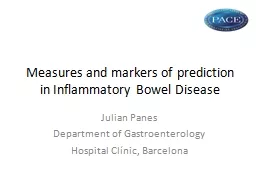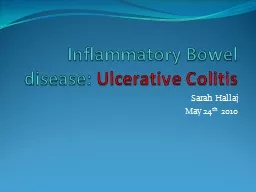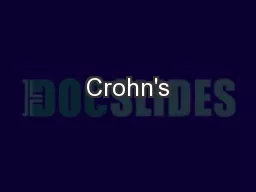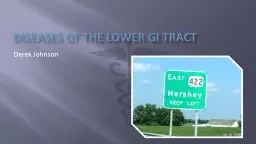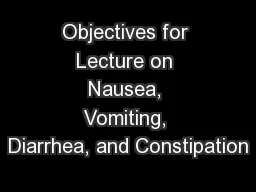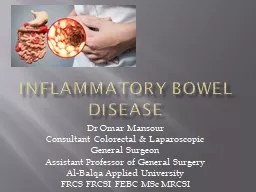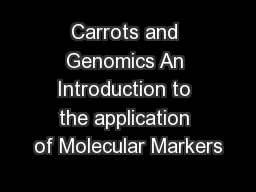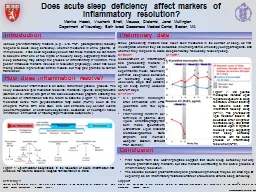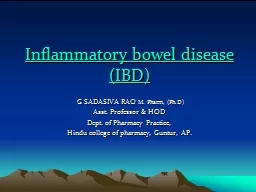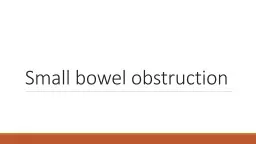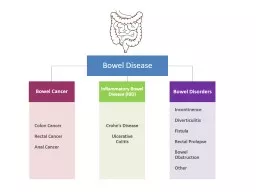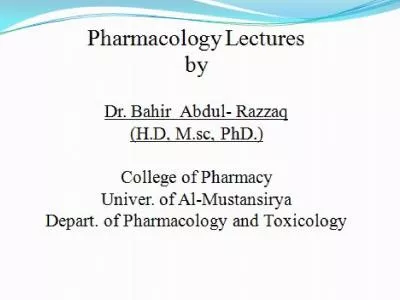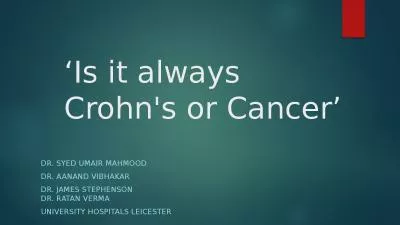PPT-Measures and markers of prediction in Inflammatory Bowel Disease
Author : HoneyBun | Published Date : 2022-07-28
Julian Panes Department of Gastroenterology Hospital Clínic Barcelona Julián Panés Professor of Gastroenterology Research contracts Abbvie Boehringer Ingelheim
Presentation Embed Code
Download Presentation
Download Presentation The PPT/PDF document "Measures and markers of prediction in I..." is the property of its rightful owner. Permission is granted to download and print the materials on this website for personal, non-commercial use only, and to display it on your personal computer provided you do not modify the materials and that you retain all copyright notices contained in the materials. By downloading content from our website, you accept the terms of this agreement.
Measures and markers of prediction in Inflammatory Bowel Disease: Transcript
Download Rules Of Document
"Measures and markers of prediction in Inflammatory Bowel Disease"The content belongs to its owner. You may download and print it for personal use, without modification, and keep all copyright notices. By downloading, you agree to these terms.
Related Documents

